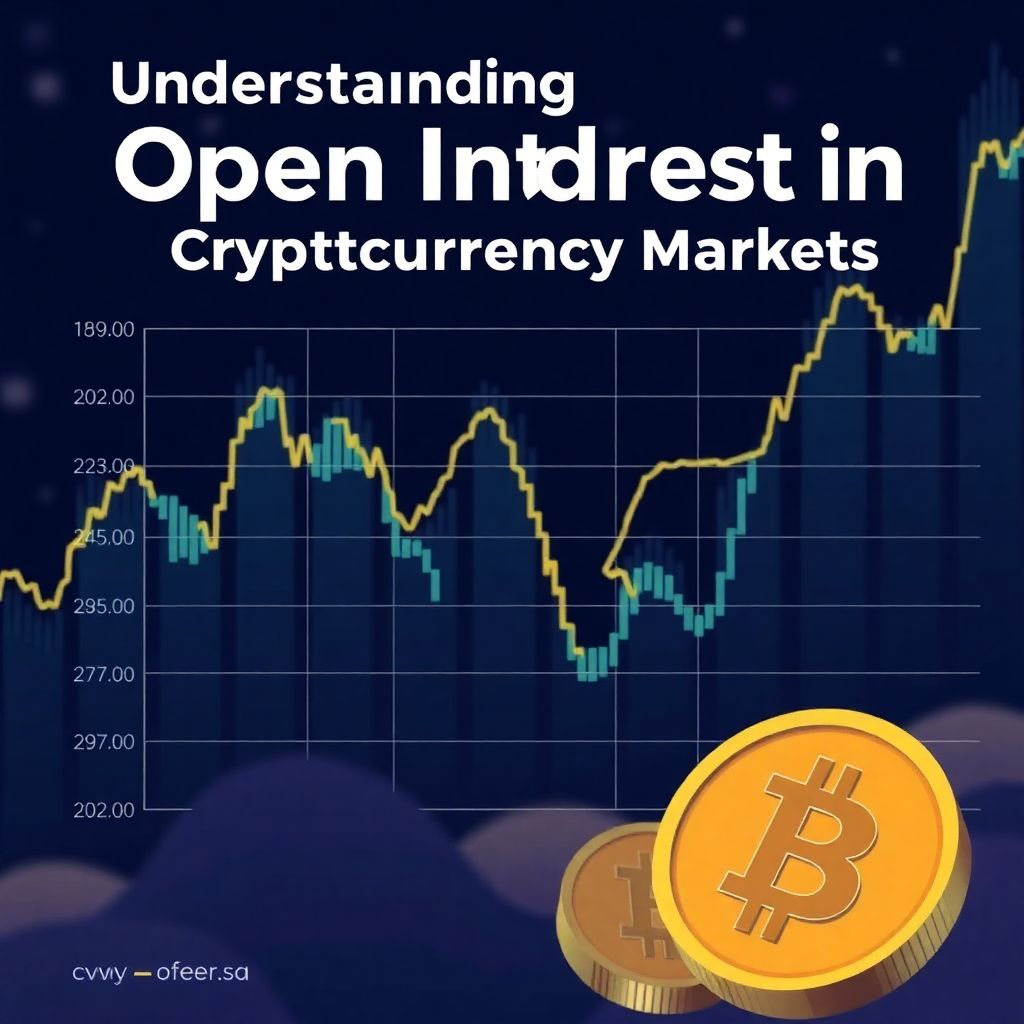Understanding Open Interest in Cryptocurrency Markets
Open interest in cryptocurrency is a critical metric used to gauge the total number of outstanding derivative contracts, such as futures or options, that have not been settled. It reflects market sentiment and the flow of capital into specific crypto assets. Unlike trading volume, which resets daily, open interest is cumulative, increasing when new positions are opened and decreasing as trades are closed. Over the past three years (2022–2024), the open interest in major crypto derivatives like Bitcoin (BTC) and Ethereum (ETH) has more than doubled, rising from a combined $10 billion in early 2022 to over $25 billion by late 2024.
This uptrend reflects growing institutional adoption and the expanding role of derivatives in hedging and speculative strategies. Platforms like Binance Futures and CME saw record open interest levels in Q3 2024, with Ethereum options surging 220% year-over-year. This indicates a maturing market where participants are increasingly leveraging proactive risk management.
Visualizing this, imagine a line graph with time on the x-axis and total open interest on the y-axis. The curve begins modestly in early 2022, ramps sharply in late 2023, and peaks in Q4 2024, highlighting the explosive growth of blockchain open interest tracking tools and the sophistication of market players.
Cross-Chain Liquidity Solutions: Bridging Fragmented Ecosystems

The rise of multi-chain ecosystems introduced both opportunity and complexity in crypto asset liquidity analysis. Cross-chain liquidity solutions are protocols and systems designed to facilitate seamless asset movement and exchange across disparate blockchains—such as Ethereum, Binance Smart Chain, Solana, and Avalanche. These mechanisms are essential for reducing slippage, enhancing trading efficiency, and enabling robust DeFi applications.
From 2022 to 2024, the total value locked (TVL) in cross-chain bridges grew from $8 billion to over $22 billion, driven by platforms like LayerZero, Wormhole, and Chainlink’s CCIP. These solutions enabled users to transfer assets like USDC or ETH across chains without relying on centralized exchanges.
A conceptual diagram can help here: Picture several blockchain “islands” (e.g., Ethereum, Solana, Arbitrum) connected by bridges. Liquidity pools sit at each junction, enabling users to swap or move assets with minimal delay. The efficiency and interoperability of these solutions directly affect crypto asset liquidity analysis across platforms and increase overall market coherence.
Cross-Asset Trading Platforms: Aggregating Depth and Access
Cross-asset trading platforms offer integrated environments to trade diverse digital assets—spot, options, futures, and tokens—across multiple chains. These platforms aggregate liquidity from various sources and utilize smart routing to ensure best execution. Examples include dYdX, GMX, and centralized venues like Binance and OKX.
Between 2022 and 2025, cross-asset trading platforms have evolved rapidly. With the average daily trading volume on decentralized derivatives platforms increasing from $300 million in 2022 to over $1.2 billion in late 2024, traders increasingly rely on aggregated liquidity to execute large and complex orders. Moreover, the integration of Layer 2 networks like Optimism and zkSync into these ecosystems has improved scalability and reduced fees.
We can imagine a network map where different asset types (e.g., BTC, stETH, USDT, AVAX) are connected through a central trading interface. Smart contracts dynamically allocate orders across chains and protocols, optimizing for execution cost and speed.
Comparative Insights: Traditional vs Crypto Derivatives Markets
Compared to traditional finance, the cryptocurrency derivatives markets lag in regulatory clarity but surpass in innovation speed. While open interest on CME for Bitcoin hovers around $4 billion as of late 2024, decentralized platforms cumulatively reach over $10 billion in open interest. However, unlike legacy systems where liquidity is centralized and predictable, crypto liquidity is fragmented and highly elastic, requiring constant monitoring via blockchain open interest tracking tools.
This decentralization enables rapid innovation but also leads to challenges in liquidity provisioning and risk containment. For instance:
1. Volatility Clusters: Highly fragmented liquidity across chains can intensify volatility.
2. Arbitrage Complexity: Cross-chain arbitrage opportunities arise, but they require high technical execution.
3. Latency Risks: Timely price discovery and execution become critical on cross-asset trading platforms that rely on off-chain oracles.
Case Studies and Statistical Trends (2022–2024)
1. Ethereum vs Solana Liquidity Depth: In early 2022, Ethereum held over 65% of DeFi TVL. By late 2024, Solana’s share grew from 5% to 18%, boosted by improved cross-chain liquidity solutions.
2. BTC vs ETH Open Interest: Bitcoin’s open interest rose from $6.1 billion in 2022 to $13.4 billion in 2024, while Ethereum saw an even sharper climb from $2.9 billion to $10.2 billion, reflecting growing demand for ETH-based DeFi and staking derivatives.
3. DEX vs CEX Liquidity Trends: Centralized exchanges (CEXs) still dominate in liquidity, but decentralized platforms (DEXs) saw a 4x increase in depth over three years, particularly on cross-asset trading platforms like GMX and Synthetix.
These numbers show a trajectory toward a more evenly distributed liquidity landscape, supported by dynamic innovation in DeFi protocols and real-time blockchain open interest tracking applications.
Conclusion: Navigating a Multi-Chain, Multi-Asset Future

The last three years have cemented the importance of understanding open interest in cryptocurrency and the role of cross-chain liquidity solutions. As users and institutions navigate increasingly complex cross-asset trading environments, the demand for effective crypto asset liquidity analysis and cross-platform integration is higher than ever.
The path forward likely includes greater reliance on automated liquidity routers, enhanced blockchain interoperability standards, and standardized open interest dashboards. These tools will not only improve execution efficiency but also deepen market transparency, allowing capital to flow freely across the expanding web of blockchains. As we step into 2025, the convergence of open interest dynamics and liquidity accessibility forms the backbone of a truly global and interconnected digital financial market.

